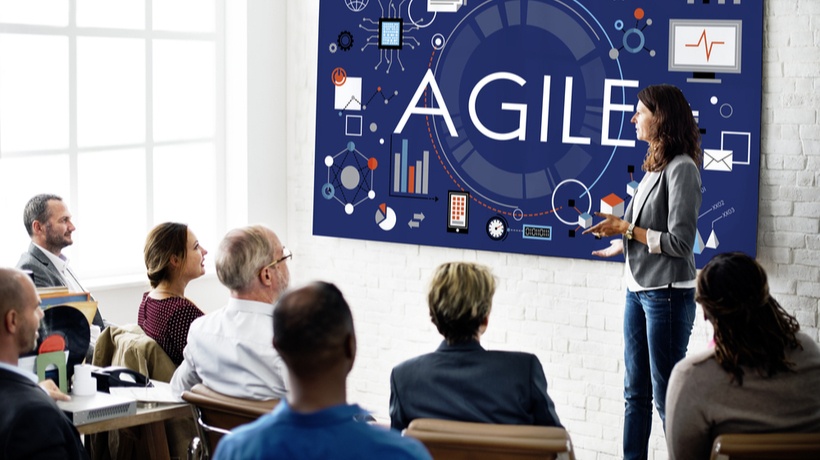Why Should HR And L&D Embrace Agile?
The year 2020 has been a rollercoaster ride for most organizations to say the least, and amidst all the unprecedented disruptions storming the business world, "Agile" has again emerged as the new buzzword and is being touted as one of the most effective work methodologies during these challenging times. The term "agile" largely refers to an approach that focuses on speed, flexibility, and collaboration. It results in greater employee engagement and better retention while promoting a mindset of flexibility, adaptability, and receptivity. As organizations are dealing with tough times, it is more important for L&D and HR teams (besides other verticals too) to embrace agile more comprehensively.
According to a 2019 Gallup study, only about 18% of US companies were fully agile, 24% were partly agile and 59% were not agile. However, 2020has showed that it is time for more companies to adopt agile because it has been seen that those that were using agile practices were in a better position to respond to disruptions like the current pandemic.
While an agile mindset has seminal benefits at any given time, they are even more consequential during this period of uncertainty. And, the same goes for any given business function, including HR and L&D, that stands to benefit to a great extent from adopting agile processes to attract, retain, and develop future employees.
So, here are the top 5 reasons why L&D and HR must embrace agile in 2020 and even beyond.
1. It Helps Develop Adaptability To Change
This year has shown how things can change at breakneck speeds. Agile learning helps ensure that employees are better suited to catch up. It aids them in developing a host of different skills and capabilities along with making them more adaptable to take risks and stay open-minded. With an agile mindset, employees (and in turn, organizations) are empowered to respond to any kind of challenge and take it head-on. Agile learning also empowers employees to quickly and easily adapt to any change in terms of new technology or a challenging business opportunity. These qualities will become even more important post the COVID-19 pandemic.
2. It Facilitates An Environment Of Collaborative Learning
There was a time when companies could afford to operate in isolation with its branches mostly disconnected—each unaware of what the other was doing. Not anymore though. In an era when crowdsourcing of ideas and insights are the "in-thing," companies too can benefit immensely through collaborative learning. In an agile learning culture, the workforce is more open to approaching their colleagues, peers, managers, or even juniors for learning issues. This collaborative learning provides them a shared platform where they can discuss, brainstorm, and develop insights together. It helps solve problems faster and employees are also able to retain knowledge for a longer time. Agile learning also promotes knowledge sharing and cooperation, eschewing the chances of crucial information being missed.
3. It Enhances Overall Efficiency
An employee learning approach that focuses on agile is more successful because it allows employees to make mistakes as they try out new ideas. Agile learning helps create a company culture where knowledge and experimentation are encouraged to a greater extent which leads to an increase in overall efficiency. Besides, in a culture of agile learning, L&D and HR are able to strike the right balance between individual and organizational goals. Moreover, increased efficiency also leads to improved customer focus. Employees tend to design business processes on the basis of what customers value the most. Through interactive media and virtual training, agile learning keeps employees ready for any kind of customer service scenario. This naturally brings about a positive impact on the business.
4. It Makes Learning A Non-Linear Process
At a time when learning has to be practical, with an agile learning approach, L&D can ensure that training isn’t just about completing certification. It enables employees to apply any skills acquired/learned to their daily tasks, self-assess for any gaps in information, and plug them in future learning cycles. It is easier to adopt a non-linear and continuous learning culture through agile learning. A continuous learning culture helps ensure that the knowledge acquired is relevant and can be applied to the task at hand during the time of need.
5. It Facilitates Learning At The Point-Of-Need
In an agile learning environment, the focus is not on compelling employees to simply finish a course or training session within a stipulated period of time. It is more about making learning available anytime, anywhere, and at the time of need through innovative content formats (like videos and digital flashcards), mobile support, and social media integration. This kind of microlearning through small, bite-sized chunks encourages comprehensive learning. Since these small content nuggets can be consumed quickly and at any location, they also encourage employees to hone their professional skills even when they are outside of work. After all, there is no expiration or time frame for employee learning.
An agile learning culture will go a long way in not just helping companies survive, but thrive in this ever-changing world. It will especially be even more valid in the post-COVID world beyond 2020. The current situation requires organizations to respond in a composed manner to complex situations, and agile empowers them to put their best foot forward in the face of uncertain times.

